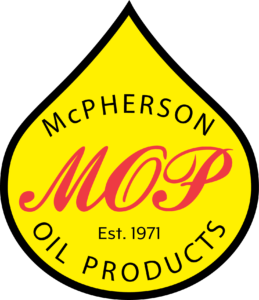Extending Diesel Engine Life in Off-Highway Applications
01 Oct 2020, Posted by in Oil TipsDiesel engines are the driving force of many different types of off-highway operations, and keeping them running at full tilt is critical to maximizing productivity and boosting profits.
To help you keep those engines turning, this tip will examine some common diesel engine suffering points and how to protect your equipment from them.
Common suffering points for diesel engines in off-highway applications
It’s fairly obvious when a diesel engine is not performing at its best—performance issues usually lead to a loss of power or shortened engine life.
But, how can you detect suffering points before they become an issue?
Here are three common signs that we’ll take a closer look at:
- The engine is smoking black
- The engine is smoking blue
- Improperly filtered intake air
When the engine is smoking black
If an engine is smoking black, it is being over-fueled. Typically, the cause is a faulty fuel injector(s) or pump. Fuel injectors and pump repairs are not complex or expensive, but they do require the unit to be offline for a few hours.
You may be asking: Is it worth taking that engine offline to fix the issue?
Well, let’s look at what over-fueling costs you. Let’s assume the price of fuel is $2.00 per gallon. To smoke black, an engine is getting about 10% more fuel than it needs—at a minimum. An average diesel engine in a piece of heavy equipment uses 16 gals/hour, operating 8 hours a day for 200 days per year.
Based on those assumptions, the savings math for one piece of heavy equipment is as follows:
- 16 gallons/hour x 12 hours/day x 260 days/year = 49,920 gallons/year
- 10% fuel reduction x 49,920 gallons/year x $2.00/gallon = $9,984/year in annual savings for that one engine
Over-fueling can also lead to excessive soot deposits and fuel dilution of the engine oil, which can lead to premature crankshaft, camshaft, and bearing wear. All of these issues can shorten the life of the engine!
When the engine is smoking blue
Blue smoke is a warning sign that your engine is burning oil, which can shorten engine life. Here’s a rule of thumb: A diesel engine used in off-highway heavy equipment should consume about 1 quart of oil for every 25 hours of operation.
Some common causes of blue smoke in diesel engines include:
- Worn valve stem seals and
- Oil leak in the turbocharger, specifically the labyrinth seal behind the compressor impeller (both sides).
- Excessive pressure in the oil crankcase, which leads to excessive splash forcing oil behind the oil control
- Oil level too high in the crankcase, which leads to excessive splash forcing oil behind the oil control ring.
- The oil control ring (piston) is worn, allowing oil into the combustion chamber. The deposits that form may cause pre-ignition, inhibit valve closure and result in turbocharger
Diesel engines in off-highway applications should last between 25,000 and 30,000 hours. Re-building them is costly, often between $20,000 to $30,000, so it’s something you want to avoid at all costs. If you identify the causes of blue smoke and make speedy repairs, you can help minimize the impact on engine life and likely save thousands in operating hours and costs.
Improperly filtered intake air
In off-highway engines, it takes an average of 18,000 gallons of air to burn one gallon of diesel fuel. If the air is not properly filtered, abrasive dirt can get into the combustion chamber and accelerate wear of the pistons, cylinders, rings, crank/camshaft, and bearings.

Improperly filtered intake air will often lead to the introduction of abrasive silicon. Silicon will show up in the oil analysis results along with associated levels of iron, chrome, lead, tin, and copper. This result should not be ignored.
Here are steps to make sure the intake air is clean:
- Examine the air filters to make sure the pleats are intact. Restrain from cleaning air filters with compressed air and then re-use; compressed air will rip the pleats allowing unfiltered air to pass into the
- Check the filter element to make sure the seals are intact (top and bottom). Also, check the wing nut for the inner filter element that has a gasket. The gasket often gets replaced with a common bolt
during repairs or maintenance cycles. While the bolt may hold the element in place, it will allow unfiltered air into the engine.
- Monitor the manometer because it determines when it is time to change the filter element. In Figure 1, a manometer is shown as the air filter service indicator. Even the smallest break in manometers can create entryways for unfiltered air to get into the
- Check the filter housing and tubing (to the engine) for dirt tracks. As your cleaning the engine, be cautious of the filter tubing being left open to the elements. It must be cleaned before reattaching to the
- There are rubber hosing and bolt flanges that allow the air filter tubing to bend. Make sure the hose clamps and flange gaskets are
- With the engine running, spray starting fluid (ether) at the clamp or gasket. If the engine races, there is an unfiltered air
Source: Russo, Mobil™ Lube Talk
At McPherson Oil, we offer Mobil Delvac™ engine oils and Mobil Diesel Efficient™ fuel that can help you minimize downtime and lower your total cost of ownership.
© 2020 ExxonMobil.
